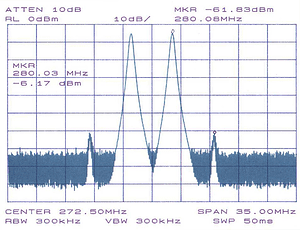Benefits of Intermodulation Suppression Panels for Congested Sites
Posted on 21 August 2024
It is common for multiple radio and wireless service providers to share communications sites and cell towers, and this proximity often results in spectrum congestion. Radio frequency interference can originate from a wide number of sources, from natural phenomena such as lightning and sun spots to high power broadcast systems like AM/FM radio and TV transmitters, 2-way radio, paging, cell phones, and emergency and public safety communications systems, power lines, transformers, medical equipment, as well as any device that produces RF energy. In common communications systems, RF interference degrades or completely disrupts signal quality, overall system performance, connectivity between two or more stations, and system carrying capacity. This interference can render a RF system non-functional, it can cause an intrusion of music, conversation or noise, or it can create problems in system performance.
What is Intermodulation Interference?
There are three basic categories of Intermodulation Interference. They are receiver produced, transmitter produced, and other radiated intermodulation interference. Transmitter produced intermodulation interference is the result of one or more transmitters impressing a signal in the non-linear final output stage circuitry of another transmitter, usually via antenna coupling. Receiver produced intermodulation interference is the result of two or more transmitter signals mixing in a receiver RF amplifier or mixer stage when operating in a non-linear range. Other radiated intermodulation interference is the result of transmitter signals mixing in other non-linear junctions such as rusty bolts on a tower, dissimilar metallic junctions, or other non-linear metallic junctions in the area.
Caption: A 2-tone intermodulation distortion test uses two closely spaced tones and measure the linearity of a system observing the sum and difference products generated. More advanced tests that better emulate current spectrum congestion use several tones.
How can Intermodulation Suppression Panels Solve the Problem?
Intermodulation Suppression Panels provide a solution for cleaning up interference at congested radio sites when a full combining system may not be cost effective. In addition to controlling transmitter intermodulation, IM Panels also greatly reduce transmitter maintenance and expensive repairs by providing a constant load, protecting the transmitter from opens, shorts, or other faults in the antenna system.
Source: Telewave


